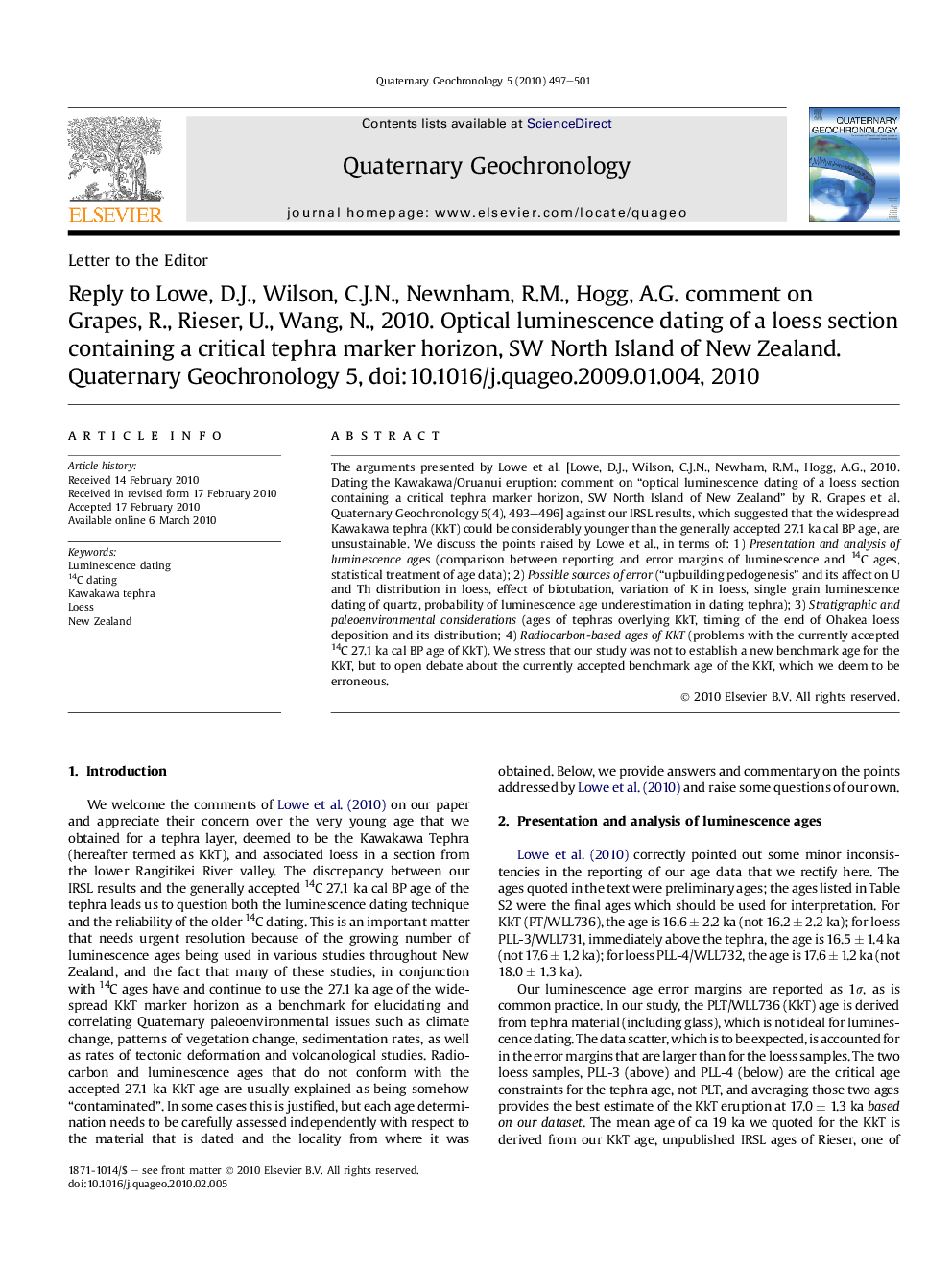| Article ID | Journal | Published Year | Pages | File Type |
|---|---|---|---|---|
| 4725450 | Quaternary Geochronology | 2010 | 5 Pages |
Abstract
The arguments presented by Lowe et al. [Lowe, D.J., Wilson, C.J.N., Newham, R.M., Hogg, A.G., 2010. Dating the Kawakawa/Oruanui eruption: comment on “optical luminescence dating of a loess section containing a critical tephra marker horizon, SW North Island of New Zealand” by R. Grapes et al. Quaternary Geochronology 5(4), 493-496] against our IRSL results, which suggested that the widespread Kawakawa tephra (KkT) could be considerably younger than the generally accepted 27.1 ka cal BP age, are unsustainable. We discuss the points raised by Lowe et al., in terms of: 1) Presentation and analysis of luminescence ages (comparison between reporting and error margins of luminescence and 14C ages, statistical treatment of age data); 2) Possible sources of error (“upbuilding pedogenesis” and its affect on U and Th distribution in loess, effect of biotubation, variation of K in loess, single grain luminescence dating of quartz, probability of luminescence age underestimation in dating tephra); 3) Stratigraphic and paleoenvironmental considerations (ages of tephras overlying KkT, timing of the end of Ohakea loess deposition and its distribution; 4) Radiocarbon-based ages of KkT (problems with the currently accepted 14C 27.1 ka cal BP age of KkT). We stress that our study was not to establish a new benchmark age for the KkT, but to open debate about the currently accepted benchmark age of the KkT, which we deem to be erroneous.
Related Topics
Physical Sciences and Engineering
Earth and Planetary Sciences
Geochemistry and Petrology
Authors
Rodney H. Grapes, Uwe Rieser, Ningsheng Wang,
